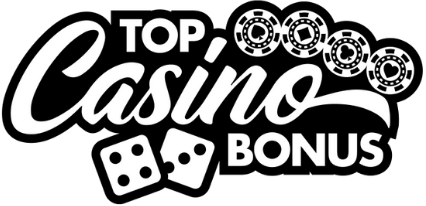How to play the bubble in poker tournaments
The bubble stage of a poker tournament is where dreams either come to life or dissolve into thin air like cigarette smoke curling from a railbird’s lip. This is the money bubble, the moment just before players make the minimum cash. One place from security, one misstep from zero. Now, most newer players freeze or go wild here. Neither will serve you well. You wanna survive and thrive? You’ve got to learn to play the bubble like a surgeon cutting through chaos.
Table of contents
Why the bubble stage demands a different strategy
Contrary to what some fresh-faced grinders believe, the poker bubble isn’t about grabbing chips recklessly. It’s about surgical precision. You’ve got short stacks hanging by a thread, big stacks throwing their muscle around, and middling stacks stuck in limbo. That’s a pressure cooker, and it’ll expose any cracks in your game.
Understanding opponent psychology is key
Short stacks are hanging on for dear life trying to crawl into a min-cash. Medium stacks often turtle up, too scared to play a hand. Big stacks? They’re hunting. They know fear’s in the air and they’ll apply maximum pressure. You’re not just playing your cards here, you’re exploiting fear, stack dynamics, and mental fatigue.
Playing different stack sizes on the bubble
The approach changes wildly depending on where you sit stack-wise. Understanding your role in the meta-dance of the bubble is crucial. Misplay this and you’re either bleeding equity or blowing your shot entirely. Let’s break it down like a mechanic nosing around a rattling V8.
Short stack: survival without paralysis
If you’re short, say under 10 big blinds, you can’t just fold your way in. That’s a fine way to get blinded out and miss the money by one spot. You need to identify fold equity, tight players on your left, blinds that won’t fight back. Open-shove spots must be calculated. This isn’t kamikaze poker; it’s survival poker with a scalpel.
Medium stack: the tightrope walk
Mid stacks often have the roughest time. Too short to bully, too deep to punt light without risk. But this is where good game sense pays off. If your table has alpha-chip-bullies, avoid collisions. Let the ICM (Independent Chip Model) work in your favor and prey on guys more cautious than you. Jump on mistakes like a hawk on mice.
Big stack: controlled aggression
Now we’re talkin’. If you’ve got chips, you’ve got power. But use it like a refined tool, not a sledgehammer. Don’t spew just ’cause you’re ahead. Focus on pressuring those terrified of busting. Ace-rag from the cutoff against medium stacks? That’s a green light. Multiway confrontations? Slow down. Dominion on the bubble is less about brute force and more like chess with loaded dice.
Leveraging table image and position
Table dynamics matter tenfold on the bubble. Are you the silent type who gets credit or the maniac who gets called with a napkin? Smart bubble play requires reading that table like an open book, if your image screams tight, you can raise more liberally. If you’ve shown down questionable hands, you’ll need to recalibrate and tighten up quick.
Position saves chips and wins pots
Late position is gold on the bubble. You’ll know who’s playing scared and who’s on tilt. Button and cutoff opens can often steal blinds risk-free. Early position? You better have real ammo or knowledge of table inertia to sell the bluff. Picking the wrong spot at the wrong time is like swinging blindfolded into a haystack for a needle.
Exploiting others’ mistakes
Let’s sit grandma-tight players aside for a second. Some folks, especially in lower-stake online MTTs at places like Dunder Casino, misinterpret the bubble and fold literally everything. That’s free money. Target them relentlessly. Then there are old-timers still clinging to myths. If someone believes they’re “due” a double-up because they’ve been card dead, they’re fell for the classic gambler’s fallacy.
These misconceptions are your sharpest knife. Use them. One guy always min-cashes and never pushes edges? Steal from him. The kid who thinks quad-bluffing on the bubble brings image points? Lay a trap, snap him off, scoop the reward. That’s rubber-meets-road poker IQ right there.
Doing recon: table awareness on the bubble
A lot of folks just watch their own stack, their own hand, like they’re playin’ in a vacuum. I never understood that laziness. You should know who’s tanking every hand, who’s short on every table, and which players are under the most pressure. Tap into that awareness, it’s your real-time HUD.
Online, it’s even more critical. Say you’re playing at Casumo, with 200 left and 198 paid. You better track who’s stalling, who’s running clocks, who’s in the red zone. That edge is free, and it separates sharks from fish. Same thing if you’re battling on Chance Hill. Data, context, intuition, that’s your three-legged stool.
When to shift gears after the bubble bursts
The moment the bubble bursts, everything shifts. Passive survivors turn into all-ins, big stacks stop bullying, and chip preservation gives way to chip accumulation. But mark my words: this isn’t the time to go berserk. You’ll see a third of the table ship light over the top and blow hands they didn’t need to play.
Churn, not burn
Post-bubble play’s all about churning chips steadily, not incinerating them. Push your margins, sure, but keep calculated aggression. Especially online at rooms like Genting Casino, where every MTT has sharks waiting in the weeds, you need sustained momentum, not one big hit that ends your run.
Final thoughts: the bubble reflects your understanding of risk
If you want to tell whether someone understands tournament poker, really gets it, watch how they play the bubble. It’s the crucible that separates wild guessers from tacticians. It’s like tuning an old radio: too much distortion and you lose the signal, too quiet and you miss the transmission.
Respect the math. Read your opponents like novels left open in the rain. And know this: surviving is good, but maximizing your equity is how you win, not just cash. Fold too much and you stagnate. Push too early and you explode. But if you dance that razor’s edge like you were born on it, you won’t just survive the bubble, you’ll weaponize it.





0 Comments